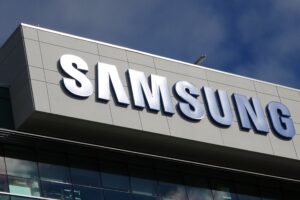Micron Technology’s (MU) post-earnings decline and Nvidia’s (NVDA) shaky sell-off have not been a vote of confidence for the AI landscape to investors this week. Is this the first sign of an AI bubble materializing?
To help answer these questions and more, Lead Edge Capital Founder Mitchell Green comes onto Yahoo Finance’s Catalysts to talk about the long-term vision of the artificial intelligence trade.
“If you believe that the hyperscalers are who are going to spend giants amount of money, I should say hyperscalers and the Singaporean government and the Middle Eastern governments are going to spend more money next year on this stuff. Then it’s probably a long. If you think that this CapEx could be some sort of slight bubble, it’s probably a short. What we think is it’s very real, but this stuff is going to take a lot longer to play out than people think.”
Green states it could be some of the AI “incumbents” that actually come out on top at the end of the long-term adoption timeline.
For more expert insight and the latest market action, click here to watch this full episode of Catalysts.
This post was written by Luke Carberry Mogan.
Video Transcript
Shares falling today after the company forecast failed to meet lofty expectations that investors had set for the A I space and for this company in particular.
And this comes off the back of a wild ride for in video this week after the company briefly topped Microsoft as the most valuable in the world.
Now that stock is down almost 5% over the course of the last five days.
So should investors be read about a potential A I bubble to come?
Joining us now is the founding partner of lead edge capital, a venture firm focused on the tech and software sector, Mitchell Green here with us in studio Mitchell.
Thanks for being here.
Thanks so much for having me.
So talk to me about what you’re seeing in terms of the concentration, right?
Because obviously this is causing some concern for investors who love to say in video as the new Cisco.
Are you seeing this moment as a bubble?
Do the investors who say that?
Do they say it’s overvalued or do they say we’re gonna ride Cisco for a while?
Still a little bit of both NVIDIA is a law if you believe so we think A I set them back.
We think A I is very real.
We have not made any A I investments ourselves.
Happy to walk into.
Why, why?
I think it’s real.
We think it takes a lot longer than it does, but specifically related to NVIDIA.
You own NVIDIA today.
It’s like 100 and $20 stock or whatever.
Roughly it is probably 4 to 5 bucks of earnings next year.
So it trades it 30 times given the growth rates, it’s not crazy expensive.
I think just one fundamental thing.
If you believe the hyper scale and they are a long ways away from their competition, like a MD and some of these all smaller companies that are attacking at the fringes.
But these, these guys have built an incredible business and incredible chips.
If you believe that the hyper scalers are gonna, who are gonna spend giants amount of money, I should say hyper Scaler in the Singaporean government and the Middle Eastern governments are gonna spend more money next year on this stuff.
Then it’s probably along if you think that this Capex could be some slight sort of slight bubble, it’s probably a, a short uh what, what we think is, it’s very real, but this stuff is gonna take a lot longer to play out than people think.
And it’s our belief that it’s like the telecom bust in the late nineties, early two thousands where people massively overbuilt capacity, you’re gonna also also we believe here, see, costs come dramatically down over, over time.
If you want to build a website in 1997 you went to some microsystems and spent, you know, 50 million bucks to build your website today.
You pull out your credit card, spend 25 bucks and go to Go Daddy.
Same thing’s gonna happen with A I.
So then what does that shake out look like?
Uh, if you are a lot of the V CS plowing money into some of these companies, we think there’s gonna be lots of zeros.
It, it, what’s interesting in A I is, there’s three things that people don’t think about.
One with the advent of that phone on your desk, the iphone coming out in whatever, 2007, 2006 whenever how many companies that didn’t exist after 2000 sev that didn’t exist before 1997?
Uh Sorry, 2007.
How many new companies were created that are worth over $100 billion?
Three byte, Dance Pin Dodo and Uber only three, you know who wins?
Incumbents.
So the incumbents are the giant incumbents like sales force or Microsoft or Oracle or Google or Small Snowflake.
They’re all gonna win two.
We’ve never seen growth rates like this in companies.
I’m stealing a line from very famous VC.
They’ve never seen growth rates like this in companies, but they’ve never been shakier.
In other words, the gross dollar retention rates aren’t that good.
So it’s like a lot of people are trying this but they’re not sticking around to the customers.
So it’s like a lot of like project based stuff right now.
And I think that’s gonna, and that would imply that it’s probably some sort of bubble.
Are we gonna see those companies though?
The smaller ones, are they going to fail?
Are they going to be acquire?
I guess, in terms of consolidation, I think many people would say, well, we’ll see some sort of cons consolidation within the space.
A lot of the start ups aren’t going to succeed.
But are we going to see more of these larger players?
The incumbents acquire some of the smaller players, I guess?
And when you talk about that timeline and, but right, but when you talk about that timeline, what more realistically does that look like everyone’s excited about it?
Now, what’s it gonna take for you to get in when we see gross retention rates go up?
So, gross retention rates are all, what I mean by that for the uh for the viewers is before you have any up sells or anything, you take $100 a year of revenue the next year.
Do you end up with $70 if you didn’t add a new customer or you end up with $95 like 95 is best in class, like think about people on sales force.
It’s like impossible to get off sales force or an oracle or like Microsoft Office and these products are very hard.
But when you have like 70% gross retention rates, it just implies 30% of your customers are turning every year.
And we’re seeing really low retention rates, we will get interested in this stuff when gross dollar retention rates.
Yeah.
90 plus.
Ok. Really quickly, like less than a minute here, you’ve said previously, your biggest mistake in the last decade was not predicting multiple expansion.
Are you potentially making that mistake again?
By not getting it on A I right now, maybe.
But that’s fine.
We don’t have to, we can stick to boring software companies like Pacem make that, make cardiac monitoring software or growth zone that makes chamber of commerce.
So 40% this year software is struggling right now, that’s the best time to invest in companies.
But again, a huge amount of our portfolio, we’ll end up selling to private equity.
So 60 plus percent of our companies are, are profitable businesses where you’ve never heard of any of these businesses like growth zone or GVL or Pace Mate.
They’ll never be giant IP OS.
We don’t need them to, we’ll sell them to one of 100 private equity firms or we’ll sell them to a tuck into a strategic and make and try to make, you know, 2 to 5 times our money versus trying to bet on the ifpo markets.
Coming back.
The reason IP O market is not strong right now is if you run money at Wellington or Tre or Fidelity, it’s easier to go by Microsoft or Facebook or Google or NVIDIA.
They’re growing super fast because I think the biggest challenge in a lot of the software companies is if you just look across the whole software ecosystem as public companies, they’re not growing that fast anymore.
A lot of them have slowed down a lot.
Well, Matt Green, we have to leave it there, but thanks so much for coming in studio.
We look forward to hopefully having you back soon and continuing this conversation, lead edge capital, founding a partner.
Thanks so much Michele.
Thanks for having me on.







